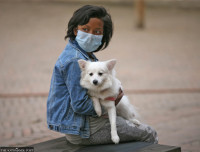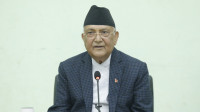National
Lockdown being relaxed against recommendations of health experts
CCMC chief says without easing restrictions, livelihood of many disadvantaged people was at stake.
Prithvi Man Shrestha
The government relaxed most of the economic and social activities including allowing operation of public transportation services despite reservations from health officials.
On Monday, the local administrations of the Kathmandu Valley decided to allow resumption of public transportation services under odd-even number rule starting from Tuesday for the first time in two months while extending the deadline of the lockdown till July 5. Most shops were also allowed to reopen till 6pm.
Last week, private vehicles and taxis were allowed to operate under the odd-even number rule. Citing the decreasing number of Covid-19 cases in recent days, the lockdown measures are being relaxed.
But officials admitted that health officials were against relaxing the restrictions, particularly on public vehicles, fearing that progress so far achieved in bringing down the infection rate may be lost.
“Obviously, the health officials were against opening the public transportation services. They were of the view why anybody should travel around as shops would remain open for a certain period in a day,” Balananda Sharma, coordinator of Covid-19 Crisis Management Centre (CCMC). “But the decision to relax transportation services was taken to save the livelihood of transport workers and save transport entrepreneurs who have invested billions of rupees in the sector.”
After the meeting of the CCMC directive committee headed by Prime Minister KP Sharma Oli on June 16 decided to impose a ‘smart lockdown’ by easing restrictions on economic activities including the production and supply of essential commodities adhering to safety guidelines, local authorities have been gradually lifting the restrictions.
Sharma said that given the state’s inability to provide support to the most disadvantaged groups in the last two months, it was necessary to create a situation where they would be able to work and earn a living.
Even though the government had introduced a relief scheme targeting the poor section of society during last year’s lockdown, no such scheme has so far been announced this time.
“The relaxation in lockdown is the balancing act between health and livelihood,” said Sharma.
According to the Federal Affairs Ministry, 5.7 million people from 1.8 million families were provided relief packages during last year’s lockdown. About Rs3 billion was spent on relief last year, according to the ministry
Officials at the Health Ministry told the Post that they had suggested not to resume public transportation services at the moment considering the prevailing risk from the Delta variant of the coronavirus, which is more infectious than the one that spread last year during the first wave of the pandemic.
“We had suggested to the CCMC not to reopen the public transport services for the time being. We had reservations about the resumption of private transport also,” a senior official at the Health Ministry told the Post on condition of anonymity. “But the question is how much our voices are heard in the current structure of CCMC.”
As per the organisational structure set by the Covid-19 Crisis Management Ordinance, there is the presence of just one top health official in the leadership.
Sharma, a retired lieutenant general of the Nepal Army, leads the CCMC as its coordinator while a top Health Ministry official, a major general of the Nepal Army, additional inspector general of the Nepal Police, additional inspector general of the Armed Police Force, a joint-secretary of the Home Ministry and a joint-secretary of the Ministry of Industry, Commerce and Supply are the members.
In other words, four of the seven members are from the security forces.
When the CCMC was reorganised, a number of public health experts had raised concerns about the new organisational structure of the CCMC due to the minority presence of health officials.
According to the Health Ministry official, they had suggested CCMC different degrees of relaxation based on the situation of each district in terms of infections.
As of Tuesday, there are 20 districts having more than 500 active coronavirus cases while 27 districts have active cases of more than 200, according to the Health Ministry.
On Tuesday, the Health Ministry reported 1,728 new cases along with 20 deaths. Total Covid-19 cases till Tuesday stood at 636,916 while death toll till was at 9,071, the ministry said.
The daily case reported on Tuesday is far less than from the peak of 9,317 infections on May 11.
Health officials say that the cases declined particularly due to the lockdown but with the relaxation of the lockdown, possible resurgence in cases cannot be ruled out.
“Even last year, Covid-19 cases had surged after the lockdown was lifted starting from July 22, 2020,” said Krishna Prasad Paudel, spokesperson at the Health Ministry. “Risky situation for us now is that the positivity rate (infection rate among those tested) still hovers around 20 percent.”
Just a day before the lockdown was lifted last year, the government had reported 150 new cases on July 21. By that time, total coronavirus cases stood at 17,994 while just 40 people had lost their lives from the pandemic. The case positivity rate had stood at 5.6 percent.
After the lifting of the lockdown, Covid-19 cases in the country had peaked at 5,743 on October 21 last year under the first wave of Covid-19.
Paudel, who is also the director of the Epidemiology and Disease Control Division, said that the risk of resurgence was greater this time compared to last year because the Delta variant of the coronavirus is several times more infectious than the original variant.
Dr Nabin Pokharel, deputy director at Unified Covid-19 Hospital, said that he would not suggest relaxation of lockdown for at least one or two weeks given the infectious nature of the Delta variant.
“The lockdown should have remained relatively tighter so that the number of patients admitted at the ICU (Intensive Care Unit) decreased significantly,” he said.
According to the Health Ministry, as many as 649 patients are getting treatment at ICUs and 184 are being treated with ventilator support as of Tuesday.
“Maybe the government was required to raise revenue and decided to relax the lockdown,” said Pokharel.




 5.4°C Kathmandu
5.4°C Kathmandu









%20(1).jpg&w=300&height=200)



